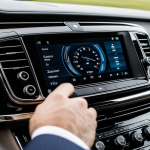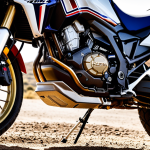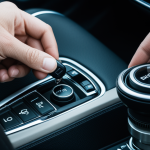Understanding Winter Damage to Classic Cars
Classic cars face unique challenges during winter, making rust prevention crucial. Exposure to moisture leads to rust, which may compromise structural integrity. A common issue is rust forming in unprotected areas or on the underbody. Additionally, frozen components can occur, especially in the UK’s varying climates.
Preventive maintenance is vital to shield against these winter-related issues. Assessing the specific risks involves considering factors like local weather patterns and storage conditions. For example, in wetter regions, extra attention to vehicles’ sealing and waxing could provide necessary protection. Being proactive with these measures is essential to minimising damage.
Additional reading : Mastering Spark Plug Replacement: An In-Depth Step-by-Step Guide for Confined Engine Spaces
Classic car maintenance before winter is not just about repairs but involves a full assessment to understand potential vulnerabilities. Take the time to address these—and prevent rust and freezing parts—so your vehicle remains intact for the spring. It might be worth investing in specific protective measures such as rust inhibitors and appropriate storage solutions to keep your car safe and sound. Following through with these precautions ensures your classic car not only survives the season but thrives once it’s over.
Preparing Your Classic Car for Winter Storage
Proper winter storage preparation is crucial for classic car preservation. Begin by thoroughly cleaning and detailing your vehicle to remove dirt and contaminants that may cause damage over time. Pay extra attention to undercarriages and unprotected areas, as residues left behind can become problematic.
This might interest you : Achieving Optimal Tire Air Pressure for Superior Stability in Your Piaggio MP3: A Comprehensive Guide
Choosing the right storage location is another pivotal decision. Ideally, select a dry, climate-controlled environment to prevent moisture, which can lead to rust. If climate control is unavailable, consider a secure, covered garage with a reliable dehumidifier or desiccant to manage humidity. An indoor car cover specifically designed for classic cars can offer additional protection, safeguarding against dust and debris.
Before placing your car into storage, conduct a full maintenance check. Focus on fluid levels, ensuring they are topped up to prevent freezing or drying out. Consider using winter-grade oils and additives aimed at classic car protection to enhance performance once winter is over.
Lastly, disconnect the battery and protect tires by either elevating the car or inflating them to the recommended pressure. These measures maintain optimal condition during hibernation, ensuring your classic vehicle emerges from winter storage in peak form.
Visual Checklist for Winter Readiness
Preparing a classic car for winter requires thorough attention, and a winter readiness checklist can ensure no stone is left unturned. Classic car inspection is pivotal, starting with examining all exterior surfaces for signs of damage or wear. Addressing such issues before winter can prevent worsening conditions.
Key items to verify should include:
- Seals and Gaskets: Inspect these for any wear or deterioration, as they are critical in preventing moisture ingress.
- Underbody: Ensure all protective coatings are intact to guard against corrosion.
Regular inspections should continue throughout the winter months. It’s essential to confirm the condition of snow tires, fluid levels, and battery health, as these components are directly impacted by cold conditions. Employing a checklist tends to minimise oversight, securing each aspect of your vehicle against winter hazards.
Moreover, winter readiness checklists needn’t disappear once spring arrives. They help identify post-winter wear as well. Regular vehicle checkups highlight emerging issues, ensuring the classic car remains in peak condition year-round. By anchoring maintenance routines to a consistent checklist, classic car owners uphold their investment and relish driving with peace of mind.
Essential Maintenance Tips Before Winter
Taking proactive steps in pre-winter maintenance can significantly influence your classic car’s performance during winter. The effects of cold weather on automotive components shouldn’t be underestimated.
Checking Fluids
Proper fluid levels are critical for safeguarding your vehicle against winter damage. Ensuring you use winter-grade oils improves engine performance in colder temperatures. Similarly, coolants and antifreeze must be at recommended levels to prevent freezing and overheating. Regular checks help eliminate potential issues early.
Battery Care
In cold climates, the health of your battery is paramount. Batteries can lose charge more quickly in low temperatures, so it’s vital to regularly test and maintain them. It’s advisable to clean the battery terminals and apply a protective coating to prevent corrosion. Consider investing in a battery maintainer to keep it in optimal condition.
Tire Maintenance
Ensuring your tires are prepared for winter conditions is essential for safety and vehicle efficiency. Selecting appropriate winter tires or all-season variants with sufficient tread depth is necessary. Maintaining the right tire pressure is equally important, as it can fluctuate in cold temperatures. Checking tire pressure weekly during winter and adjusting as needed helps avoid potential handling issues.
Protective Products for Winter Care
When winter approaches, preparing your classic car with the right winter protection products is vital. Protective coatings and waxes play a significant role in shielding the car’s paintwork from harsh winter elements. Applying a high-quality sealant can provide a robust barrier against moisture and salt, which can lead to corrosion.
Additionally, using specialized winter fuel and antifreeze is essential for maintaining engine efficiency during colder months. These products are formulated to handle lower temperatures, ensuring that your car performs optimally and prevents the freezing of critical fluids.
Consider investing in products tailored for tire and interior care. For tires, use a treatment to preserve rubber flexibility and increase longevity. Interior protection products prevent drying and cracking, particularly in leather and vinyl components, which can suffer from the reduced humidity of winter storage.
Selecting effective car care products helps preserve your classic car’s condition, ensuring it remains in peak form throughout winter. The combination of external and internal protection guards against common winter pitfalls, such as rust and component degradation, increasing your vehicle’s lifespan. Regularly updating your protective regimen to meet specific seasonal challenges is an investment in your classic car’s future performance.
Safe Driving Tips in Winter Conditions
Winter months can pose unique challenges for classic car owners, but informed winter driving tips ensure both enjoyment and safety. One of the most critical techniques for maintaining classic car safety is understanding how road conditions affect handling. On icy roads, apply brakes gently and avoid sudden accelerations. This gradual approach prevents sliding and enables better control.
Anticipating the weather is also crucial. Listen to forecasts and adjust your plans accordingly. If conditions are severe, consider postponing your drive to avoid unnecessary risks. Being proactive about weather conditions ensures you take safe and calculated steps during your journey.
Invest time in understanding your car’s specific needs. Adjust tire pressure according to cold temperatures and ensure that windshield wipers are in excellent condition to maintain visibility. Familiarise yourself with your classic’s braking system to manoeuvre effectively on slippery surfaces. Recognising how vehicle dynamics change under different weather conditions promotes safety and confidence on the road.
Lastly, keep essential emergency equipment like a first-aid kit, flashlight, and blanket in your vehicle. This preparedness not only safeguards you in emergencies but also adds a buffer of protection and assurance in unpredictable winter scenarios.
Common Pitfalls to Avoid During Winter
When managing winter car care, awareness of typical pitfalls is crucial to preventing damage to your classic car. One significant mistake is opting to drive in unsafe conditions. Winter weather can severely impact handling, and driving without proper precautions increases risks.
Improper storage options also pose a threat. Storing your classic car in a damp or unprotected environment can lead to rust and moisture damage. Always choose a dry, climate-controlled location or a well-sealed garage. Ignoring these storage needs may result in costly repairs or irreversible damage.
Misconceptions about winterizing classic cars can cloud judgement. Some owners mistakenly believe that general car maintenance covers all winter needs, but classic cars require tailored care. For instance, neglecting to apply rust inhibitors or failing to check frozen components can severely impact performance.
To avoid these care errors, be proactive in understanding and applying appropriate maintenance routines for your classic vehicle. By identifying common winter care mistakes, such as inadequate storage and misconceptions about winterizing, owners can better protect their investments and ensure their classic cars retain their value and performance.





